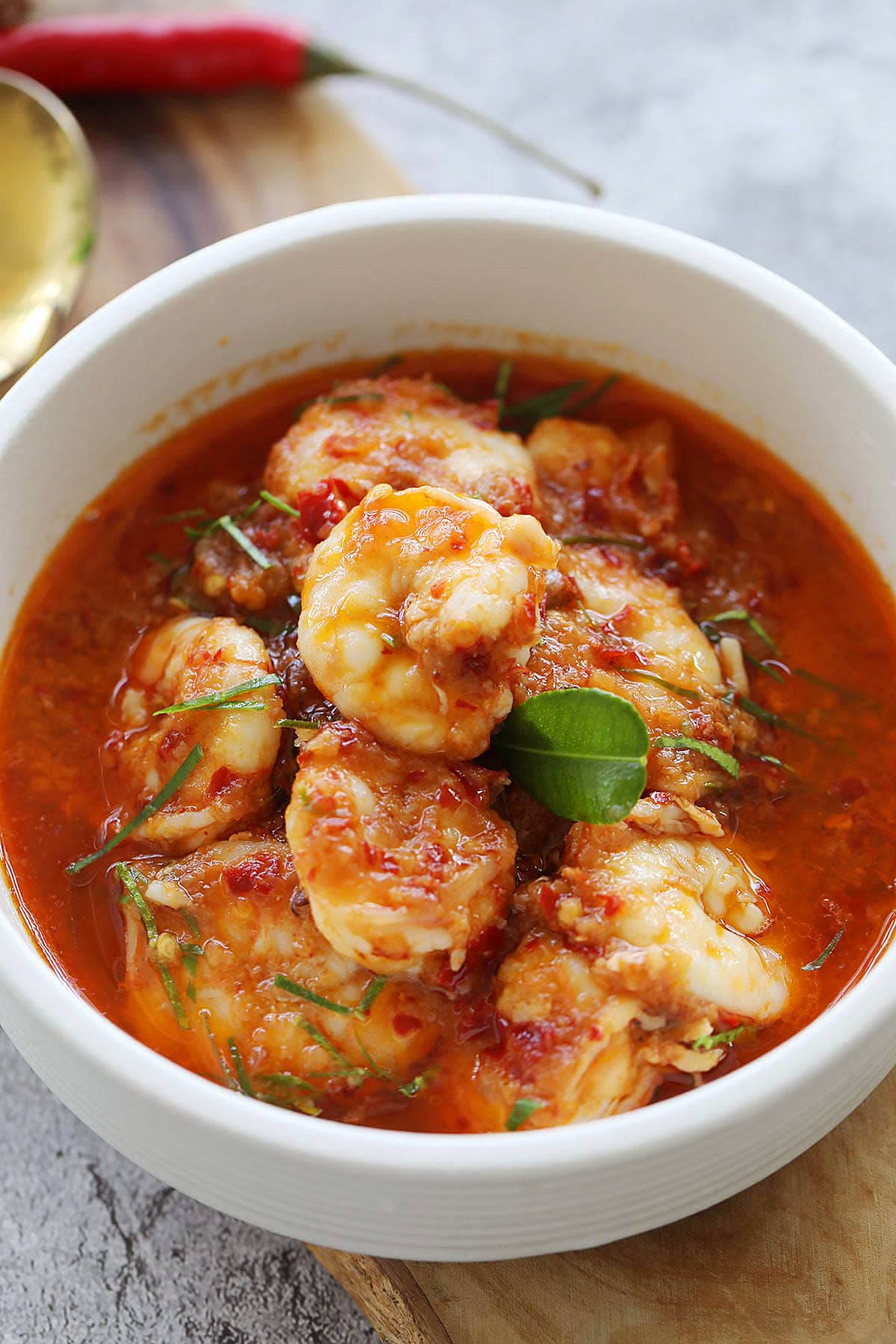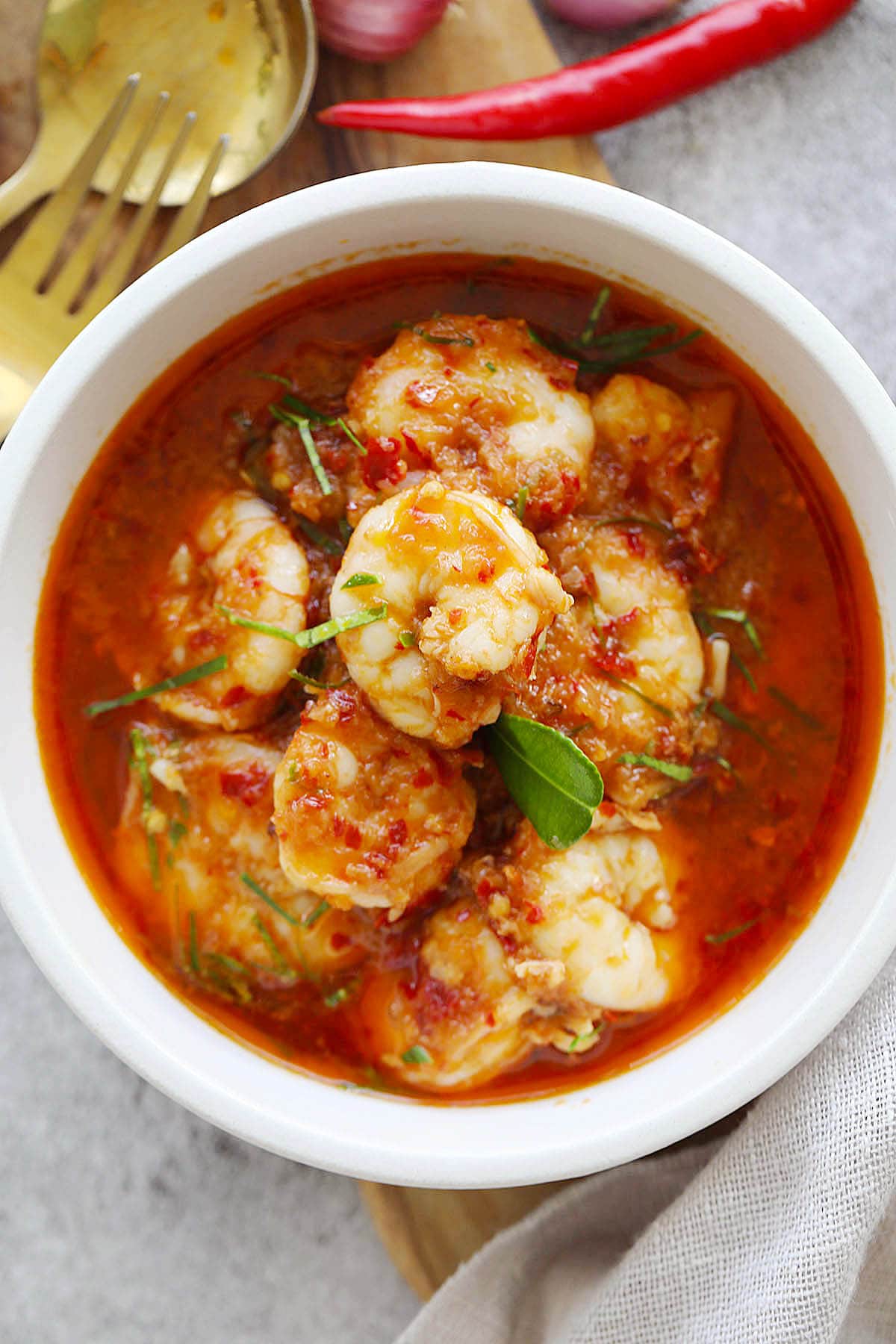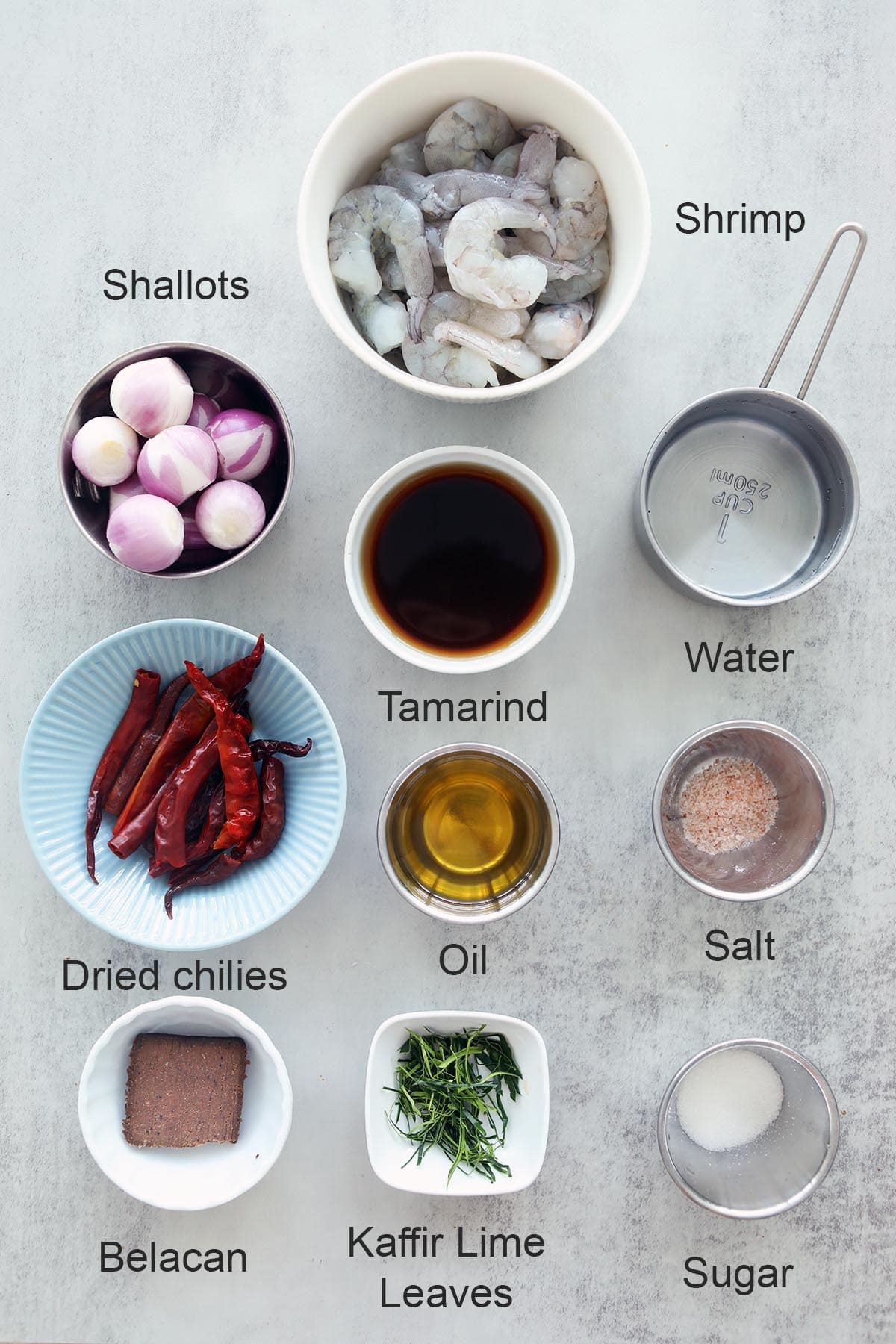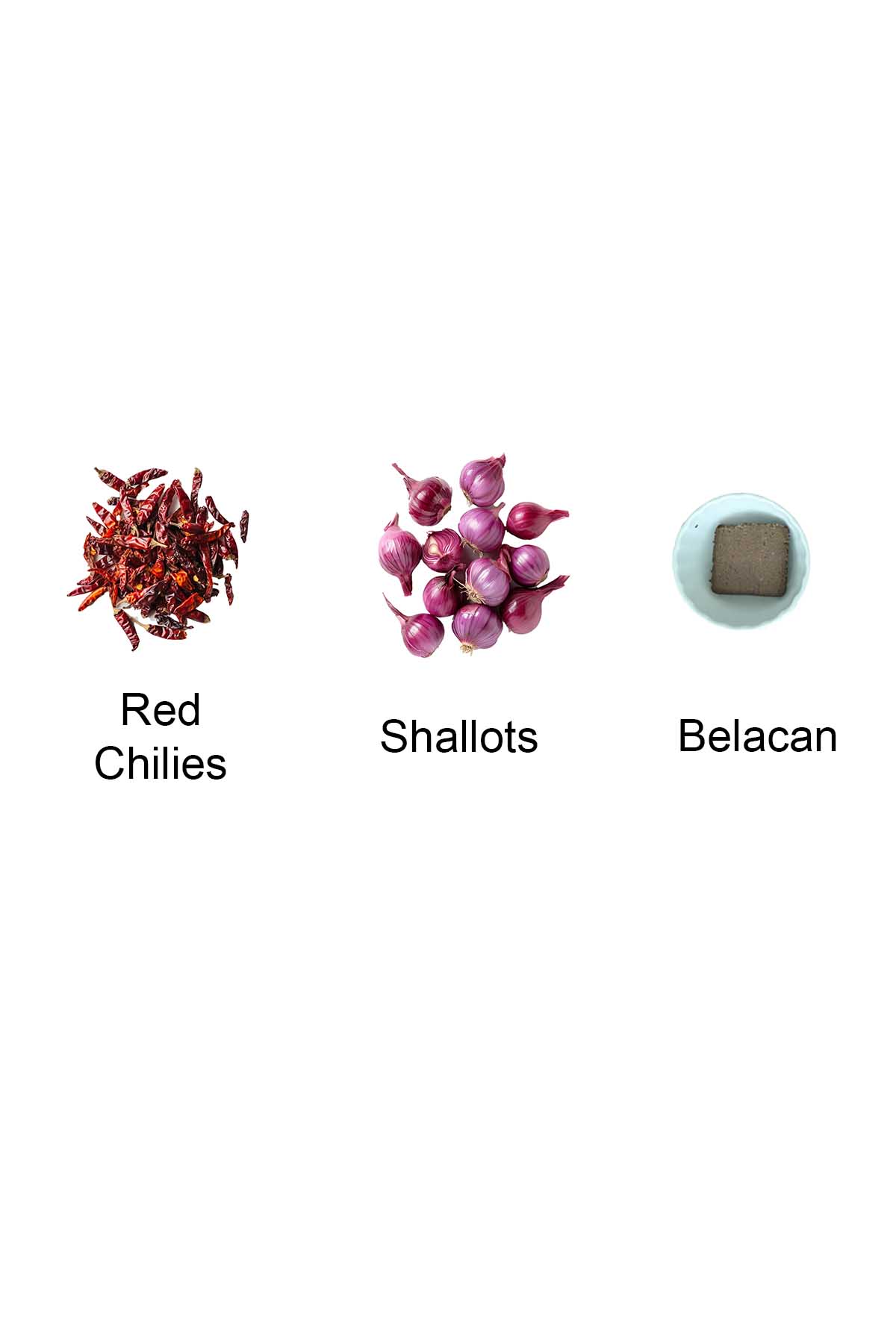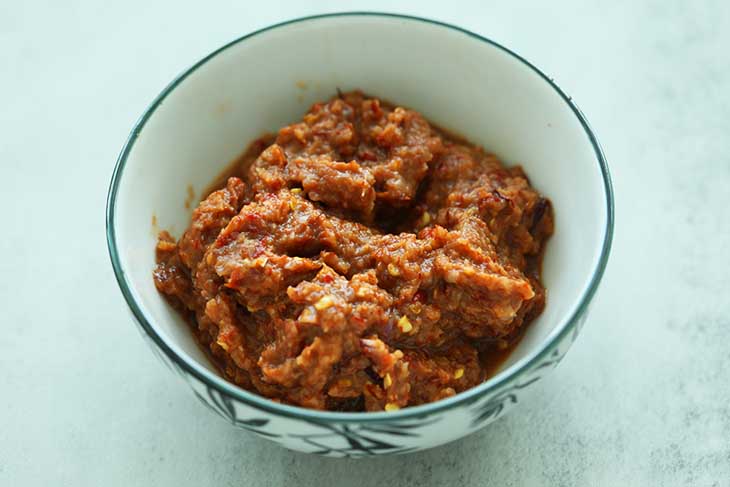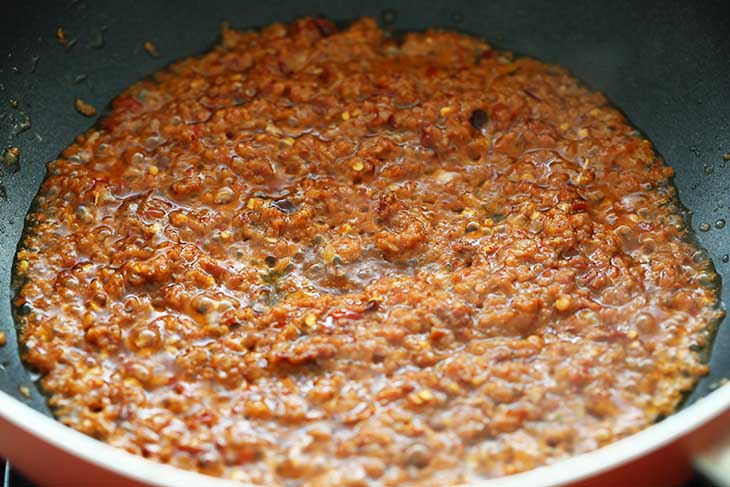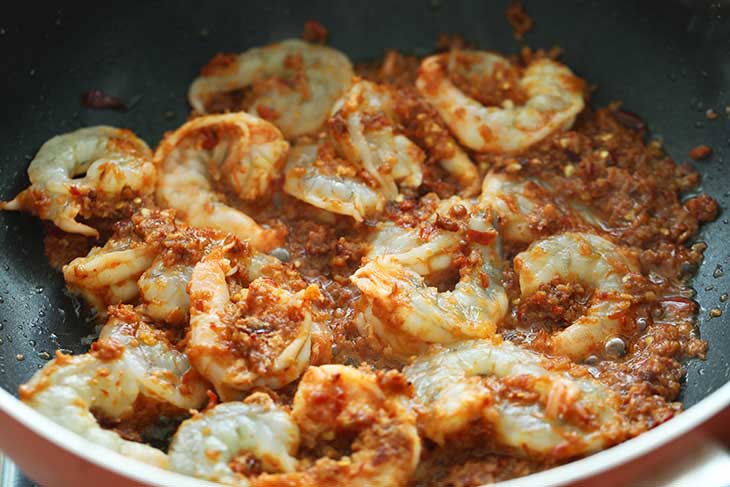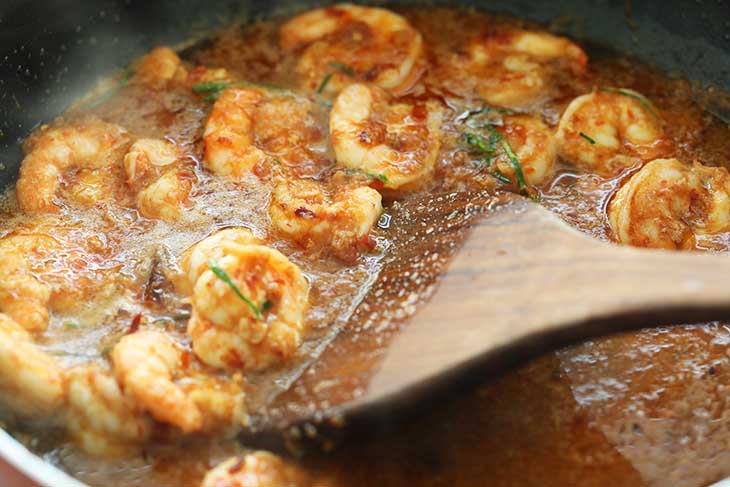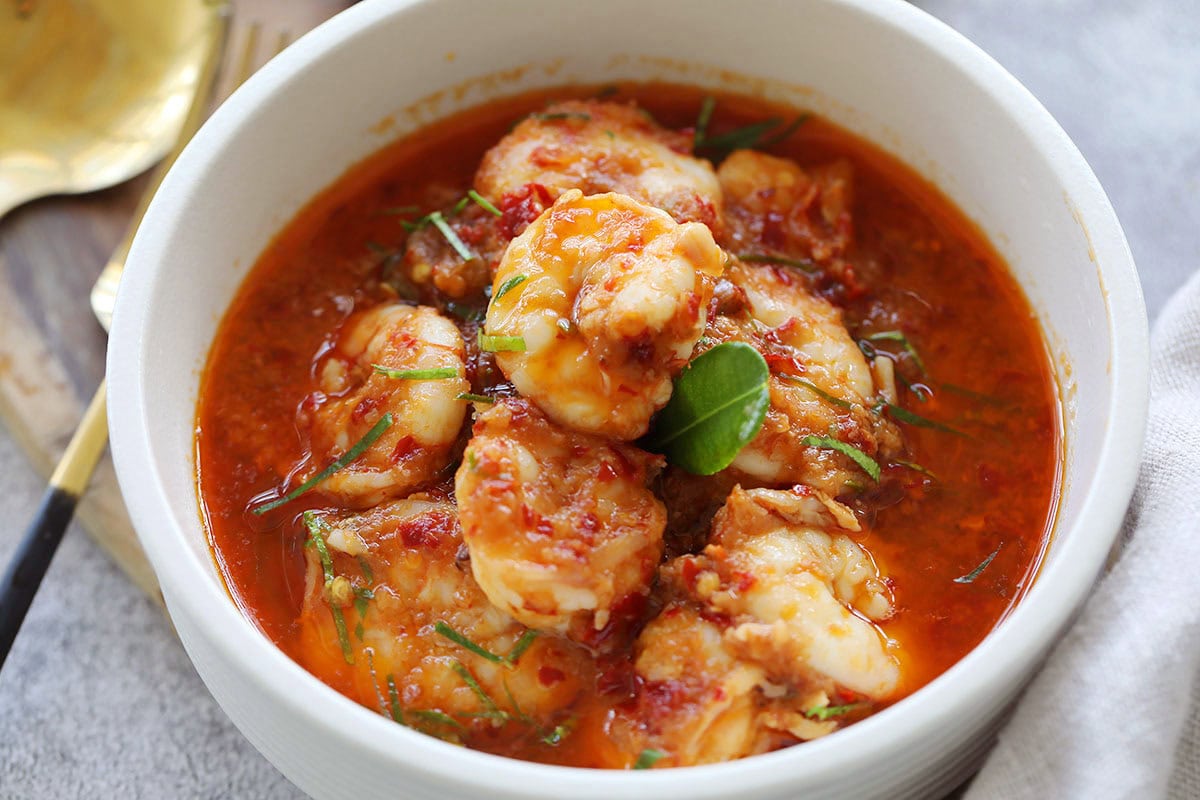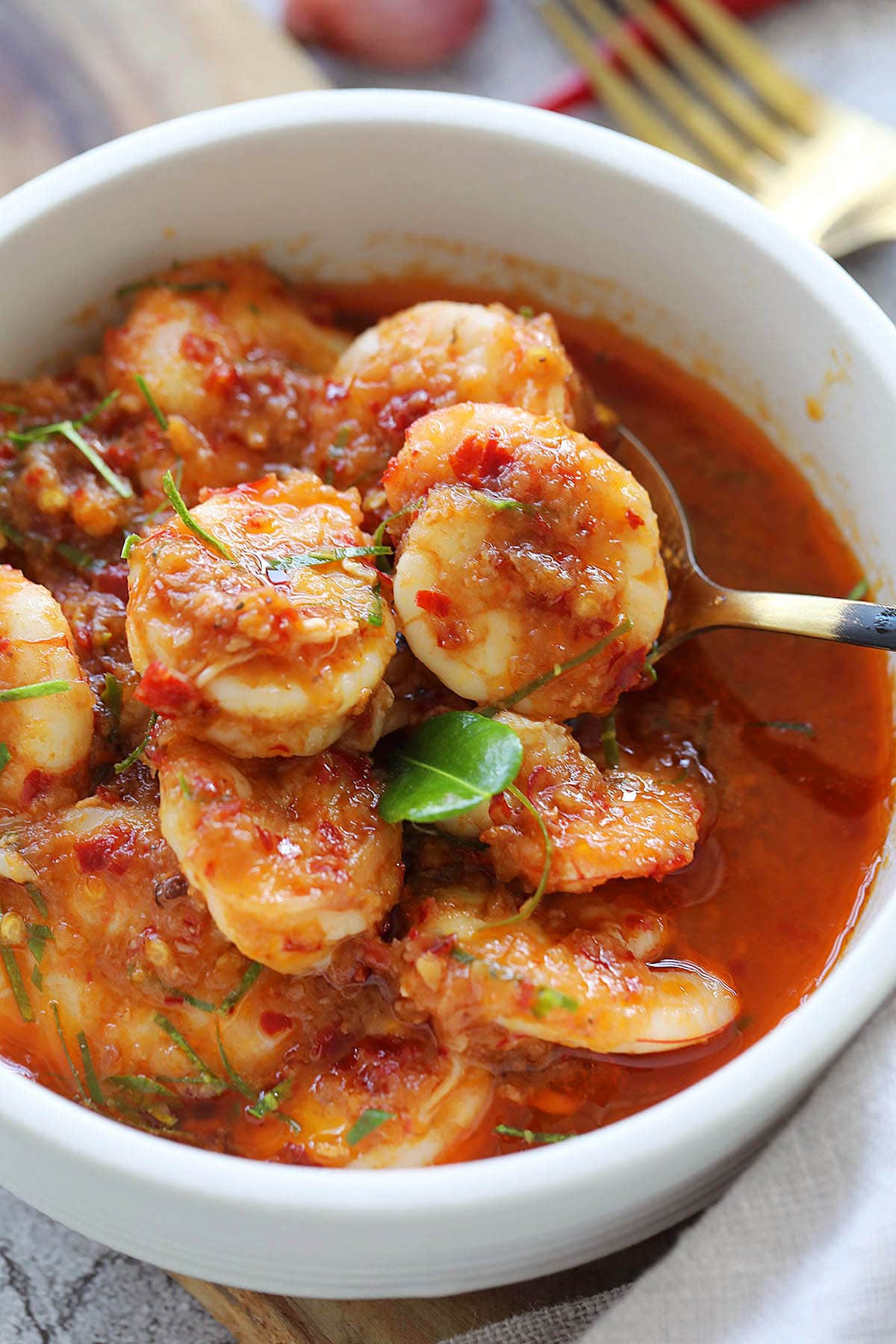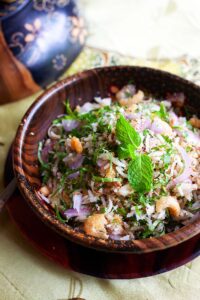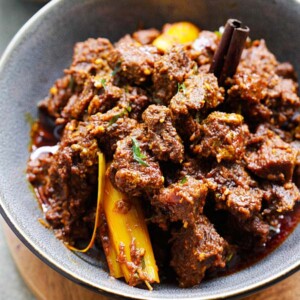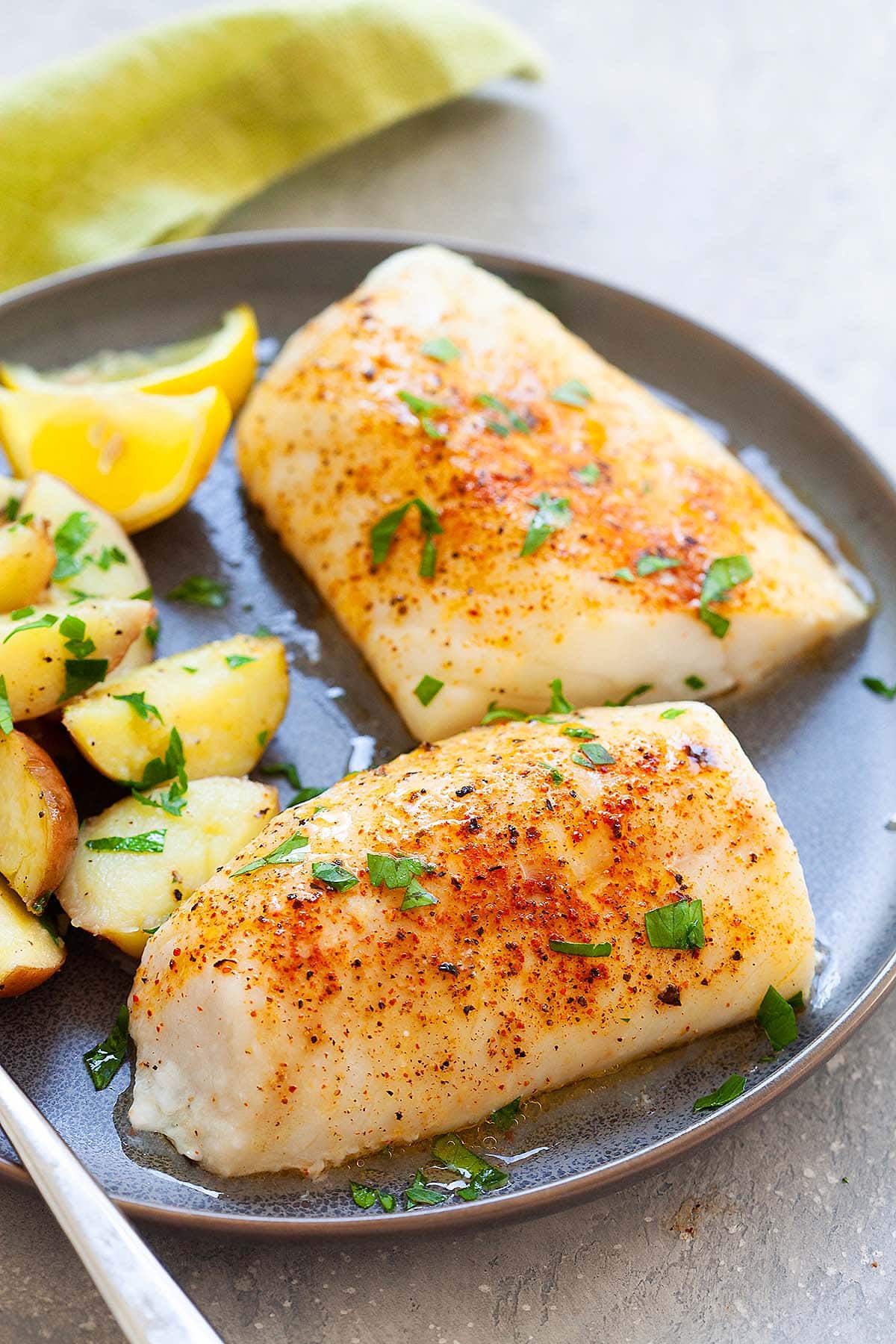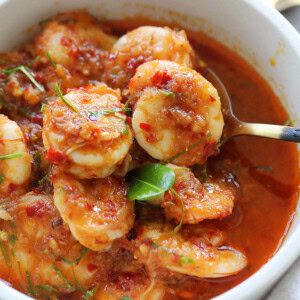Published Apr 18, 2011 Updated Sep 13, 2024
Prawn Sambal
Sambal Udang is a beloved Malaysian and Indonesian dish with prawns (udang) cooked in a spicy, aromatic sambal sauce made with red chili peppers, shrimp paste, shallots, and tamarind juice. Known for its bold and savory flavors, sambal shrimp is typically served with rice or as part of a larger meal. If I had to choose one dish to eat every day, this would be it. Sambal Udang, also known as sambal tumis udang in Malay, is a staple in Malay, Chinese, and Peranakan-Nyonya households. Made with sambal paste and flavored with belacan (Malaysian shrimp paste), this dish is best enjoyed drizzled over steaming hot rice. There are many variations of prawn sambal, some incorporating petai (stinky beans), but the core ingredients remain similar. This family recipe, handed down from my late mother, includes thinly sliced kaffir lime leaves, which infuse the dish with a delightful aroma. Each bite delivers a burst of briny prawn flavor, followed by the complex heat of the sambal, and a refreshing citrusy note from the kaffir lime leaves. This recipe is truly scrumptious and a must-try. Can’t get enough of sambal tumis? Check out my recipes for sambal telur, sambal asparagus, and sambal sotong!
What Is Sambal
Sambal is a spicy chili paste or spice paste commonly used in Southeast Asian cuisines, particularly in Malaysia and Indonesia. It’s the building block of Malay cuisine, the soul of numerous Malaysian and Indonesian recipes. Made from a mixture of fresh and dried chili peppers, shrimp paste “belacan” or “terasi” (in Indonesian language), garlic, shallots, salt, lime juice, sugar, and other ingredients, depending on regional variations. The most basic sambal paste consists of shallots, red chilies and belacan. Sambal can range from mild to extremely hot, depending on the type of chili pepper and quantity used. There are two types of sambal: fresh and cooked. Fresh sambal is called sambal belacan or sambal oelek (in Indonesia). It’s made from raw ingredients like red chilies, garlic, and shallots that are blended or pounded together. It has a bright, vibrant flavor and is often used as a condiment or dipping sauce, providing a fresh and spicy kick to dishes. Cooked sambal, or sambal tumis, is prepared by sautéing sambal paste in oil until the oil separates from the paste, a process known as pecah minyak. This cooking method deepens the flavors, giving the sambal a rich, complex taste and a vibrant red color. It is commonly used as a flavoring in a variety of dishes, enhancing their overall taste and aroma.
Sambal Udang Ingredients
Here is the list of ingredients for the most authentic and delicious prawn sambal you’ll ever make:
Shrimp – You can use medium-sized shrimp, smaller shrimp, or larger prawns like tiger prawns. Belacan or Malaysian shrimp paste Kaffir lime leaves – the secret ingredient that elevate the taste and aroma to a new level. This is also what gives Beef Rendang and Thai Panang Curry their distinct flavors. Shallots Tamarind
Sambal Udang Spice Paste
The spice paste is the heart of the recipe. My family’s version uses just three simple ingredients:
Dried red chilies Shalllots Belacan
See the recipe card for full information on ingredients.
How To Make Sambal Udang
This is my resepi sambal udang, bold flavors and an absolutely mouthwatering taste. It pairs beautifully with nasi lemak, Malaysia’s national rice dish, or roti jala. Try it out, and I’m sure you’ll want to enjoy it every day!
Helpful Cooking Tips
Quality Ingredients: Opt for fresh prawns and high quality ingredients such as tamarind and shrimp paste (belacan). The freshness of these ingredients will greatly impact the flavor of this dish. Balanced Spice Level: Adjust the amount of dried red chilies according to your spice tolerance level. Remember, it’s easier to add more heat later than to tone it down if it’s too spicy. In Malaysia, the dried red chilies are longer, compared to the ones sold in United States. So, it’s hard to precisely quantify the amount due to geographical differences. Proper Blending: Ensure that the sambal paste are finely blended to achieve a smooth texture and well-balanced flavor profile. The traditional way of pounding with a mortar and pestle is always the best. Proper blending is key to creating a harmonious blend of flavors in your sambal udang.
What To Serve With Sambal Udang
For a wholesome Malaysian meal and dinner at home, I recommend the following recipes. I hope you enjoy this post as much as I do. If you try my recipe, please leave a comment and consider giving it a 5-star rating. For more easy and delicious recipes, explore my Recipe Index, and stay updated by subscribing to my newsletter and following me on Facebook, Pinterest, and Instagram for new updates.
Other Recipes You Might Like
Sambal eggplant Sambal lady’s fingers Roti Jala with Sambal Udang

